Welcome to
the
Web-based Video Workbook
for
The Concurrent
Engineering
Video Programs Vol. 13 &
14,
on Video Tapes 13 & 14, or
on Digital Video CD-ROMs
for Engineering, Computing and
Management Students and Professionals
by
Paul G Ranky, Dr.-techn
/ PhD
Written and presented by Dr. Paul G. Ranky
and Industrial Contributors, including Mr. R. B. Syme, IBM Storage
Products Operations Manager, Mr. Gerry Edgar, Manager, Mr. Chris
Skerry, CIM Manager, Mr. Peter Neal and Mr. Mike Moulton, Managers,
IBM Havant (UK) Ltd, Mr. Robin Truman, CIM Operations Manager, GPT,
Mr. John Foster and Mr. Carlton McD Langton, Industrial Design and
Realisation, GPT-GEC Plessey Telecommunications Ltd, Mr. Paul A.
Francis, Director, International CIM Consultants, Dr. Allan Parker,
Technical Director, Mr. Mark Vaux, Mr. Mark Sealy, Mr. John Halton
and Mr. Roy Davis, Managers, Lucas Engineering & Systems Ltd, Mr.
Les Pratt, Marketing Manager, Yamazaki Machinery (UK) Ltd, Mr. Geoff
Harrington, Director, ISIS Informatics Ltd, Mr. Jim Corlett, BKT Ltd,
McDonnell Douglas Information Systems Ltd, ERT Ltd, Hitachi Seiki
(UK) Ltd and others.
Published by CIMware Ltd. UK and CIMware
USA, Inc. at http://www.cimwareukandusa.com, © Copyright by
CIMware Ltd. UK and CIMware USA, Inc., 1999 - 2000.
If you are a viewer of a legitimate copy of
the above video programs on tapes or on CDs, please feel free to view
and / or download this workbook, with its full contents, FREE
of charge, but always mention the website: http://www.cimwareukandusa.com
and the author(s) as the source!
Website:
http://www.cimwareukandusa.com
Optional on-line email support: cimware@cimwareukandusa.com
Go to Welcome Page
Please use this Workbook
together with your Video Tapes or Video CDs!
Please note, that the digital video quality
on the CD-ROMs is high and can play in full screen on a multimedia
PC, MAC or Unix machine. The video frame images inserted into this
workbook are designed to download relatively fast over the average
web-link, therefore their quality is poorer than that of the digital
videos in the CD-ROMs.
This section covers the following:
Tape/Vol. 13:
Concurrent Engineering Management at Lucas Engineering &
Systems
Tape/Vol. 14: Concurrent
Engineering Methods and Tools Diagnostic Survey
 Additional
reading on Object Oriented Concurrent (hardware and software)
Engineering: as a new development, view the free, electronically
published R&D journal, ADAM with IT
(Advanced Design And Manufacturing with Information Technology) at
this web site, as well as enjoy the hotlinks to other web sites via
ADAM's WebCorner; both just a click
away...
Additional
reading on Object Oriented Concurrent (hardware and software)
Engineering: as a new development, view the free, electronically
published R&D journal, ADAM with IT
(Advanced Design And Manufacturing with Information Technology) at
this web site, as well as enjoy the hotlinks to other web sites via
ADAM's WebCorner; both just a click
away...
Tape/Vol.
13. Starts Here:
Concurrent Engineering Management at
Lucas Engineering & Systems with Industrial
Examples
Topics covered by Dr. Allan Parker, (formerly) Director, Lucas
Engineering & Systems, in this program include the
following:
- Concurrent Engineering Management at Lucas Engineering &
Systems
- Integration issues, techniques and case studies
- Market and business requirements analysis
- Product introduction, support and processes
- Customer involvement
- Reduced product life cycle imposed issues and strategies
- Competitive pressures
- Teamwork
- Case studies and interactive exercises
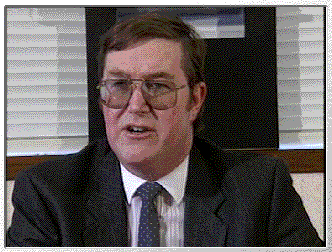
When wieving this program, try to imagine that you are a member of
the concurrent engineering team. As you can see, there are several
different engineering, manufacturing, total quality, information
technology/ computing science, marketing, management and other
expertise represented in such teams.
The core business processes of the Total
quality organization. (A conceptual figure after Lucas
Engineering & Systems, explained by Dr. Allan Parker).
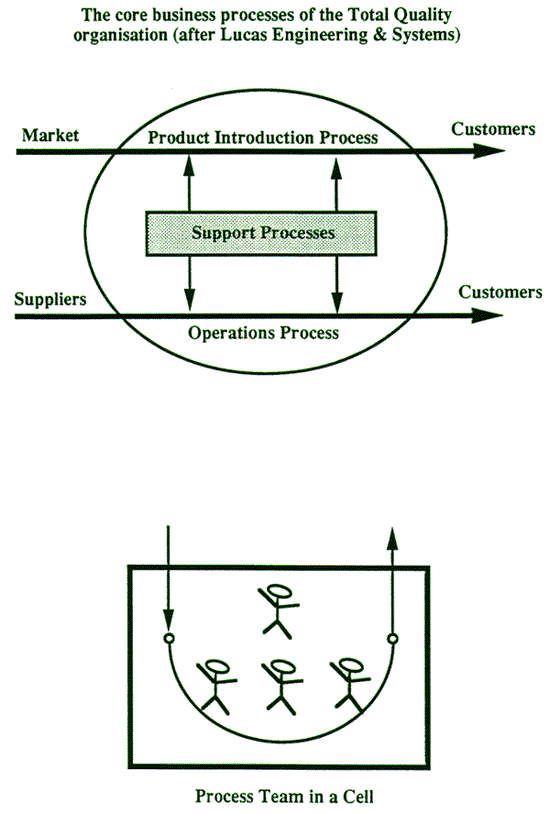
As interactive team and/or individual exercises try to answer the
following questions:
ENGINEERING:
- How do you analyze your engineering processes in your
organization or factory?
- How do you analyze your product and manufacturing
systems?
- What tools (including software tools) and techniques do you
use to improve your designs? Explain these tools in terms of what
they can do for you.
COMPUTING:
- How do you analyze your object oriented/ computing processes
in your organization or factory?
- How do you analyze your product and manufacturing
systems?
- What tools (including software tools) and techniques do you
use to improve your designs? Explain these tools in terms of what
they can do for you.
MANAGEMENT:
- How do you analyze your management processes in your
organization or factory?
- How do you analyze your product and manufacturing
systems?
- What tools (including software tools) and techniques do you
use to improve your designs? Explain these tools in terms of what
they can do for you.
Design for manufacture. The key
elements...
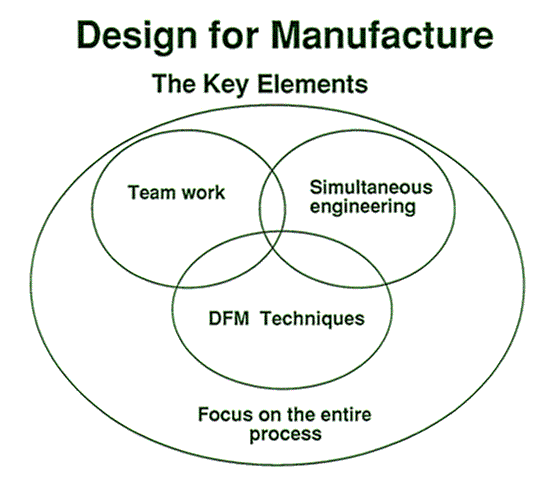
As interactive team and/or individual exercises try to answer the
following integrated engineering, computing and management
questions:
- Discuss integration versus isolation with a long term versus
short term business view. What strategies would you advise to
yourself/ your boss/ your company/ your employer and why?
- How does job satisfaction, teamwork and commitment,
multiskilled people and education come into play?
- What tools (including software tools) and techniques do you
use to improve integration versus isolation? Explain these tools
(e.g. factory intranets and the Internet) in terms of what they
can do for you.
Various methods are introduced by Mr. Mark
Vaux, Manager, Lucas Engineering & Systems, dealing with
competitive pressures and new product introduction
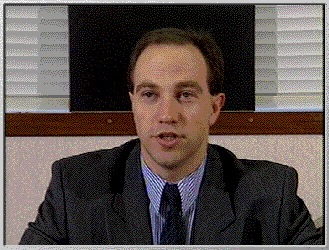
Design for manufacture. The key elements
dealing with competitive pressures and new product introduction
...

As interactive team and/or individual exercises discuss
- New product introduction methods at times when life-cycles are
shrinking.
- Methods for concurrent engineering (including integrated
hardware and software systems).
- The way multi-disciplinary teams should function when
developing and introducing new products.
- The way customer/ designer synergy benefits all parties.
- The way collaborative engineering can be established on a
global basis.
Jump To Top
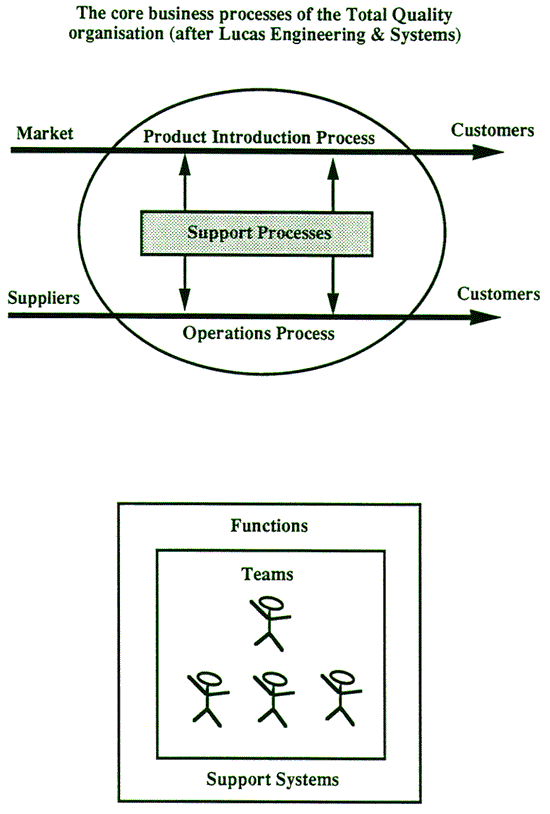
As an interactive exercise, try to
- summarize the key points,
- what you have learned in this tape, and
- how the discussed concepts and examples might relate to your
own work...
Jump To Top
***********************
End of Tape 13
***********************
Tape/Vol.
14. Starts Here: Concurrent Engineering
Methods and Tools Diagnostic Survey
Topics presented, with industrial examples, by
Mr. Mark Vaux, Manager, Lucas
Engineering & Systems, include the following:
- Concurrent Engineering Methods and Tools Diagnostic
Survey
- Requirements engineering, engineering modifications and the
re-design process
- Project management
- Engineering support and control
- Implementation
- Design for assembly and manufacturing (DFA/DFM) methods, tools
and examples
- QFD - Quality Function Deployment and the product planning
matrix
- Interactive team and/or individual exercises.

When wieving this program, try to imagine that you are a member of
the concurrent engineering team. As you can see, there are several
different engineering, manufacturing, total quality, information
technology, marketing and other expertise represented in such
teams.
As an interactive exercise, try to discuss the current
business culture in your organization...
- The benefits and drawbacks of giving people more autonomy
- Methods of simplifying product development
- The systematic step-by-step approach...
- Cash neutral methods...(if you are badly squeezed by your
accountants...)
As an interactive exercise, discuss the potential benefits of
the following methods:
- Lead-time reduction
- Throughput control
- Resource management
- "Quick hits" and teamwork
- Improved customer/ supplier relationship
- The value added chain...
Jump To Top
The design for manufacturing chain is discussed by Mr. Mark Sealy,
Manager, Lucas Engineering & Systems. Topics covered include
the following:
- Integration of teamwork, simultaneous engineering and design
for manufacture techniques and tools
- The actual design for manufacturing and assembly procedure
with its important feedback loops
- Industrial examples illustrating the way product analysis and
improvement works in practice
- The QFD (Quality Function Deployment) matrix and the
- Interlinked QFD processes
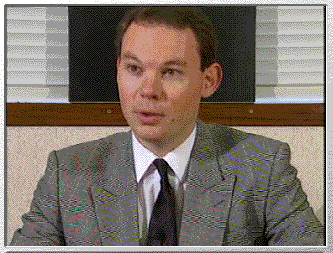
The actual design for manufacturing and
assembly (DFMA) procedure with the important feedback
loops...
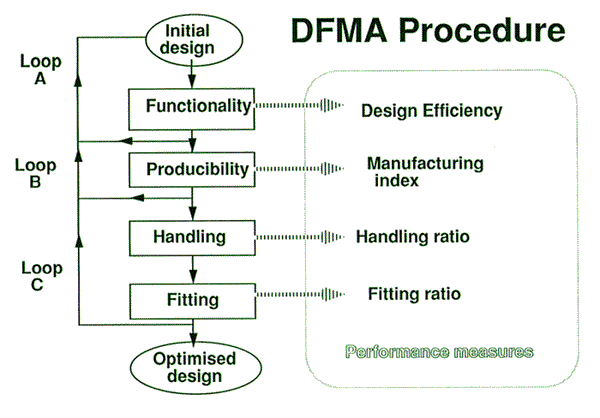
Industrial example illustrating the way
product analysis and improvement works in practice.
This is the original (old)
design...(Before scrolling further
down, try to figure out how to redesign this relatively simple
automotive sub-assembly to reduce the number of parts... the solution
is illustrated further down, don't look it up yet! ... try to solve
it yourself first! Enjoy!)
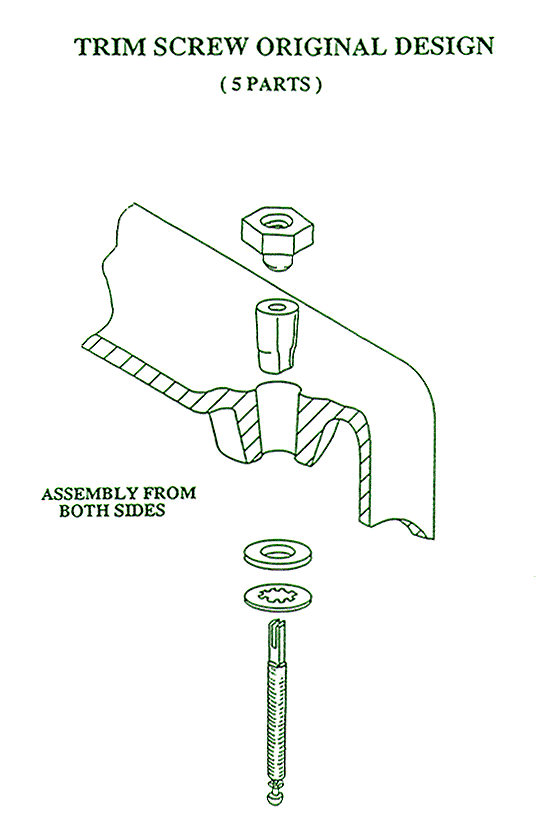
Industrial example illustrating the way
product analysis and improvement works in practice.
This is the new design...
Consider the fact that these
principles apply to all disciplines, not just mechanical design... as
an example: 76 percent of software projects fail in industry due to
the lack of object oriented design and proper management (ref. by
Rational Inc., USA, 2000). What are the engineering, management and
computing implications of the achievable part (i.e. object)
reduction?
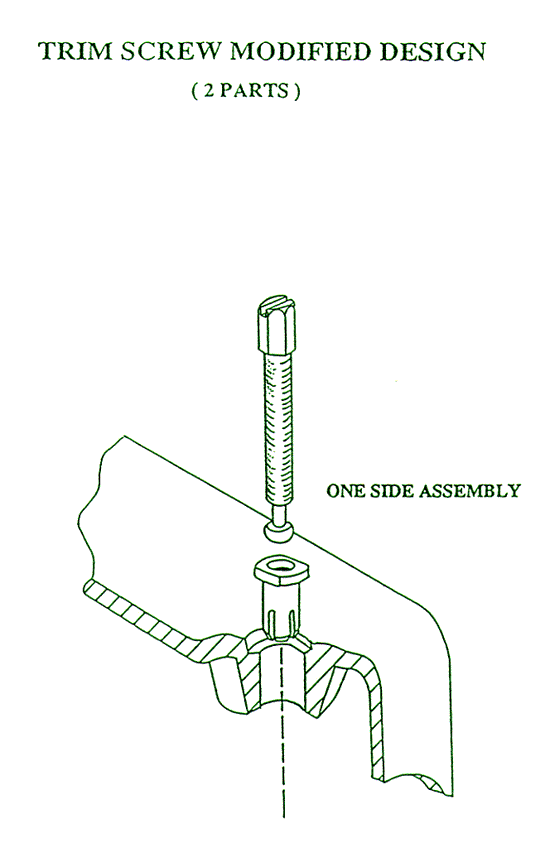
An introduction to the QFD (Quality Function Deployment)
matrix
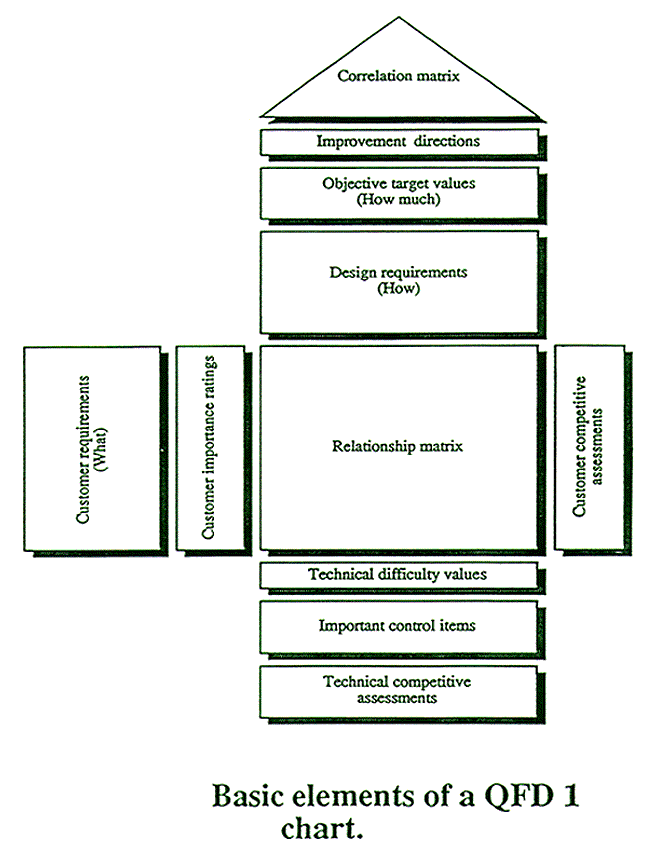
The QFD (Quality Function Deployment) interlinked processes of
Requirements, Concept, Detail and Hand
over...(Note, that in some cases
these interlinked QFD processes are called differently because they
serve different purposes. Feel free to be innovative and customize
the QFD method for your own hardware and software requirement
analysis needs. It can be a great team-managed tool if you employ it
wisely!)

As interactive team and/or individual exercises discuss:
- Why is it important to create products and services that
satisfy customer requirements?
- How can we understand customer requirements? How is QFD
helping in this?
- Discuss the design for manufacture process with feedback
loops. What are the engineering, software and management
implications? (As an example consider that if you have less and
smaller objects your web-page will load faster; is this design for
manufacture? (... of course it is! This is why good old
engineering principles can help today's software engineers... the
pyramids follow an object oriented design; they were built over
3800 years ago by engineers!)
- Explain functionality, producibility, handling and fitting
issues (not just for hardware but for object oriented software
development too...)
- Give examples of simplified designs (again, not just for
hardware but for object oriented versus old-fashioned software
designs too...)
- Explain the QFD matrix and illustrate its application for
hardware as well as for object oriented software development
- Teamwork and collaborative design activities...
Jump To Top
***********************
End of Tape 14
***********************
![]() Additional
reading on Object Oriented Concurrent (hardware and software)
Engineering: as a new development, view the free, electronically
published R&D journal, ADAM with IT
(Advanced Design And Manufacturing with Information Technology) at
this web site, as well as enjoy the hotlinks to other web sites via
ADAM's WebCorner; both just a click
away...
Additional
reading on Object Oriented Concurrent (hardware and software)
Engineering: as a new development, view the free, electronically
published R&D journal, ADAM with IT
(Advanced Design And Manufacturing with Information Technology) at
this web site, as well as enjoy the hotlinks to other web sites via
ADAM's WebCorner; both just a click
away...











